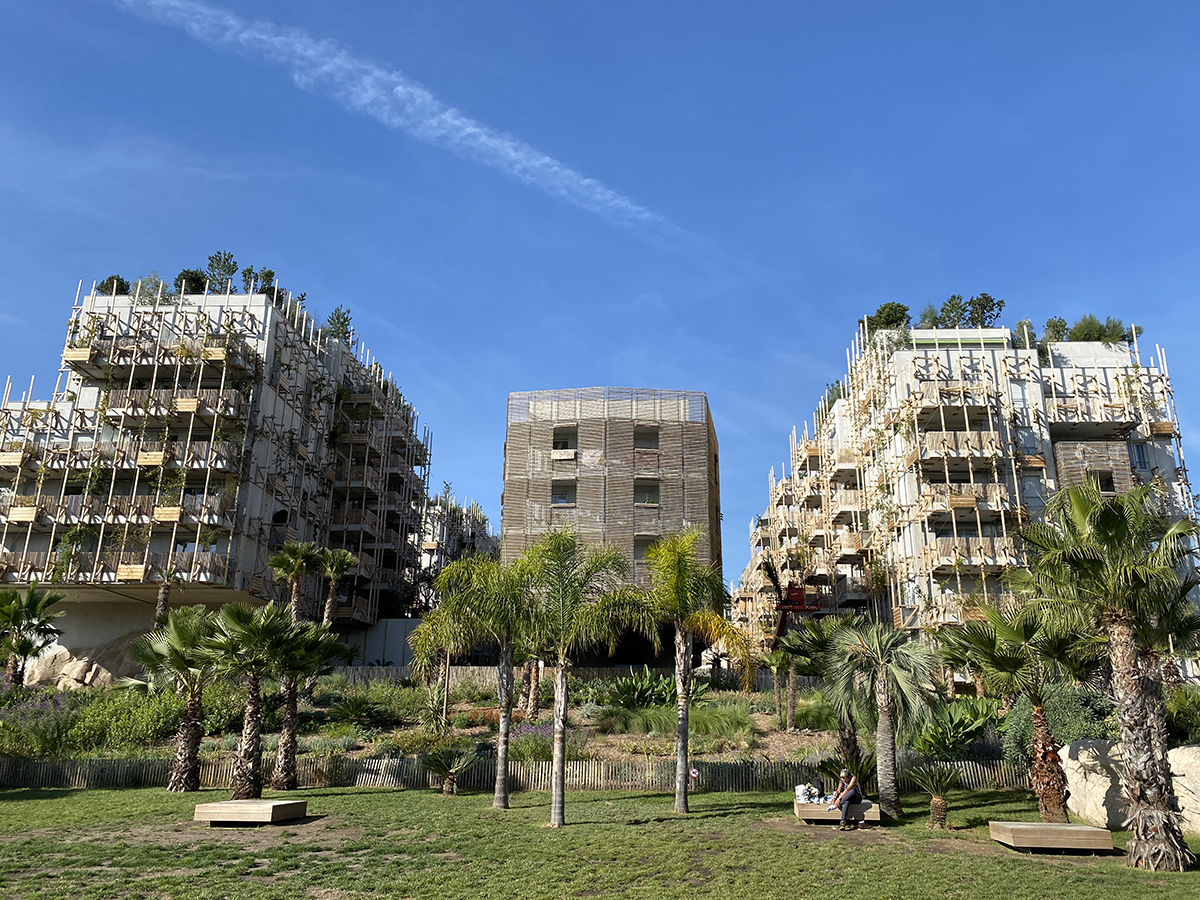A conversation led by professionals explored the idea of “reconciliation between city and nature and the necessity of rebuilding a connection between inhabited territories and natural environments.”
Organized as part of the “Living Cities” exhibition, this public conversation took place at the urban planning and architecture forum of the city of Nice. Experts in this field were present to share reflections and experiences. Léonie Debrabandère is the director of WAAO, an architecture and urban planning center in Lille. WAAO (We Are Archi Open) is a non-profit organization dedicated to raising awareness about architecture, urban planning, and landscape, much like the Nice forum. Giulietta Fassino, a historian by training, is in charge of cultural projects at Urban Lab Torino in Turin. Finally, Yanis Oussalem-Wallon, a doctor in geography and a farmer in L’Escarène, will also participate in the discussion.
Urban dynamics are undergoing significant changes. The imperative of ecological and energy transition will completely reshape cities. At the core of these questions about the urban future is the place of nature. Indeed, plants in cities create shaded areas, crucial in the context of climate change. Additionally, they contribute to the reduction of greenhouse gas emissions. A set of advantages makes nature an essential component of the urban future.
Nice, a Green City?
In December 2021, the price comparison site Le Lynx ranked the “greenest” cities in France, with Nice taking the top spot. To conduct this study, the site listed wooded areas, urban green spaces, and herbaceous vegetation areas. Nice boasted a record score of 75.72% green spaces. Wooded areas account for half of the azur capital’s surface area! In March 2019, the city launched an ambitious green plan. Since 2008 with the promenade du Paillon, the city has added nearly 33 hectares of greenery to its green spaces. Subsequently, the different green frameworks have allowed for the planting of nearly a thousand trees.
The goal of this green plan is to “renaturalize” the city. Increasing the vegetated area effectively addresses the heat retention of materials and the formation of urban heat islands. Moreover, the city of Nice aims to plant one tree per inhabitant by 2026. Currently, the city has 343,477 residents and 77,227 new trees since 2021.
What is the Urban Planning and Architecture Forum of Nice?
The contemporary cultures hub Le 109 hosts this urban planning and architecture forum. This space is primarily a meeting point, a documentation center, and a reference for locals and visitors alike. The forum undertakes three major missions. It aims to raise awareness, disseminate, and introduce the public and professionals to urban planning and architecture. Through exhibitions and discussions, it provides the public with the keys to understanding urban planning and architecture. Additionally, it positions itself as a committed educational actor. Throughout the year, the forum organizes activities for schools, allowing students to participate in creative workshops and exhibitions.
Moreover, the urban planning and architecture forum of Nice intends to resonate on different scales. Truly an actor within the Nice metropolis, it engages with both professionals and the local public. The forum also plays a role on the national stage, participating within a broader network of institutions promoting and disseminating architectural and urban culture. Finally, it seeks an international dimension through collaborations or exchanges of expertise with foreign partners.


